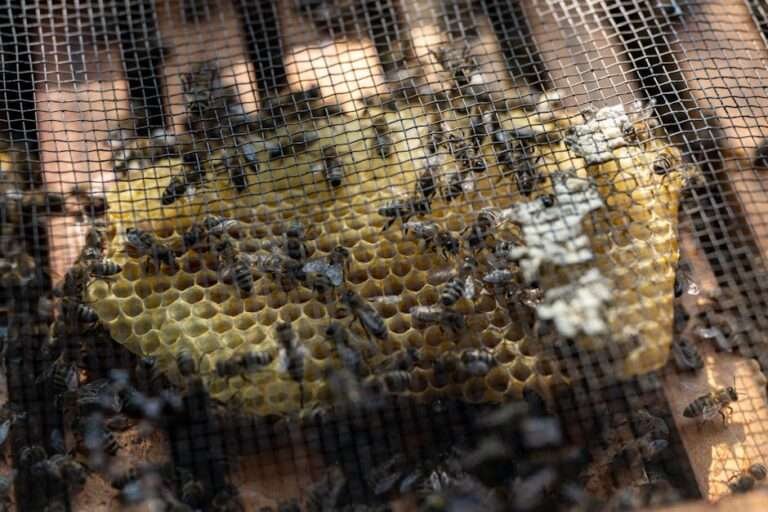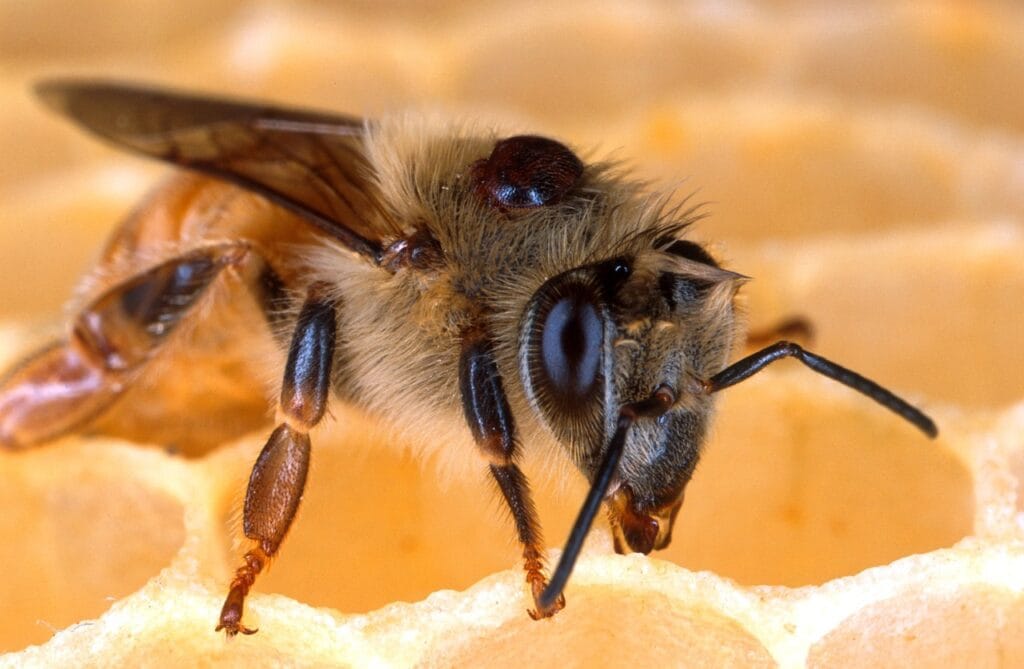What is a Screen Board?
A screen board (specifically a double screen board or Snelgrove board) is one of the most versatile yet underused tools in beekeeping.
It consists of a wooden frame with two layers of mesh screen separated by about 3/4 inch of space.
This design allows heat and air to pass through while preventing bees on different sides from physically touching each other.[1][2]
Why Use a Screen Board?
Screen boards serve multiple essential functions for beekeepers:
- Swarm control – Prevents colonies from swarming by managing bee populations
- Hive splitting – Creates two colonies from one without finding the queen
- Queen introduction – Safely introduces new queens to established colonies
- Combining hives – Allows gradual merging of colonies to reduce aggression
- Overwintering weak colonies – Helps small colonies survive winter by sharing heat from stronger colonies below
Basic Construction
A typical double screen board includes:
- Wooden frame (usually 3/4″ plywood) sized to fit standard hive boxes
- Two screens (hardware cloth or window screen) on top and bottom surfaces
- Entrance opening on one edge for the upper colony
- Bee space (3/4 inch gap) between screens to prevent bee contact[2][1]
How It Works – The Key Principle
The magic happens because bees separated by more than 3/4 inch cannot touch each other with their proboscis (tongue) or exchange pheromones directly. This makes the side without a queen feel queenless, triggering them to raise new queens or accept introduced ones.[3]
Basic Usage for Beginners
Simple Hive Split Method
- Prepare your hive – Start with a strong colony in two deep boxes
- Insert the screen board – Place it between the two deep boxes
- Position entrances – Upper entrance should face opposite direction from lower entrance
- Leave the queen below – The bottom box keeps the original queen
- Top becomes queenless – Upper box will raise new queens or accept introduced ones
What Happens Next
- Forager bees from the upper box will return to the lower entrance (their original orientation)
- Young nurse bees stay in the upper box to care for brood
- Heat rises from the lower colony to warm the upper split
- Queen cells develop in the upper box within days[4][2]
Common Beginner Mistakes to Avoid
| Mistake | Problem | Solution |
|---|---|---|
| Entrances facing same direction | Bee confusion and drift | Orient entrances 90-180° apart |
| Moving split too early | Chilled brood, colony failure | Wait until strong and established |
| Not monitoring food | Starvation of upper colony | Check regularly, add feeding if needed |
| Poor seal/gaps in board | Bees bypass separation | Ensure screens reach all edges |
| Removing too soon | Queens may fight | Wait 2-3 weeks minimum |
When to Use Screen Boards
Best Times:
- Spring – When colonies are building up and swarm pressure increases
- During nectar flows – When colonies are strong and need management
- Mild weather – Avoid extremely cold or hot periods
Best Candidates:
- Strong colonies filling two deep boxes
- Colonies showing swarm preparations
- When you need to increase colony numbers
Simple Success Tips for Beginners
- Start simple – Use basic designs with one entrance rather than complex multi-door versions
- Monitor regularly – Check every 7-10 days for queen cells and colony health
- Feed if needed – Upper colonies may need supplemental feeding
- Be patient – Allow 2-3 weeks for queen development and mating
- Practice timing – Learn your local conditions and bee behavior patterns
Building Your Own
Many beekeepers build their own screen boards using:
- 3/4″ plywood for the frame
- Window screen or #8 hardware cloth
- Basic woodworking tools
- Entrance hole (about 1″ diameter) on one edge
The construction is straightforward and costs much less than commercial versions.[1][2]
Bottom Line for Beginners
Double screen boards offer a safe, non-invasive way to manage hives without having to find queens or risk colony damage.
They’re particularly valuable for new beekeepers because they’re nearly “foolproof” when used correctly and provide multiple management options as your skills develop.
Start with simple applications like basic splits, then explore more advanced techniques as you gain experience.[4]
⁂
- https://beeculture.com/build-a-double-screen-board-snellgrove/
- https://www.youtube.com/watch?v=I0u1enLDf8o
- https://www.youtube.com/watch?v=rPKBT5e82JE
- https://www.youtube.com/watch?v=RzR2zzU5HBE
Ad – Amazon Associate Store
- Material: Fir wood frame + 304 stainless steel mesh (aperture 3mm). The screen isolates the bees that are above from the bees that are below the screen, while still allowing heat to cir…
- Six Different Entrances: By manipulating the six different double entrances, one can add or subtract bees from the top or bottom, or run a split on top of one parent colony.
- Material: Fir wood frame + double layer 304 stainless steel mesh (aperture 3mm). The screen isolates the bees that are above from the bees that are below the screen, while still allowin…
- Spring Splits: Often in the spring you want to create a split in order to create a new hive or to prevent swarming. This snelgrove board is a good choice.
- Screened bottom board 10 frame Dimensions (L x W x H): 16-1/4″ x 22″ x 2-9/16″ inches.
- Bee hive screened bottom board Coated with 100% Beeswax To Help Protect The Wood From The Weather.






